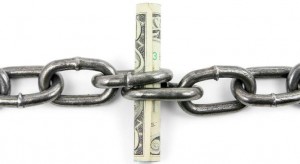 You know the drill: put on your link-building hat and drive website traffic! But why?
You know the drill: put on your link-building hat and drive website traffic! But why?
Everyone’s telling you to increase audience development by getting on social networks, PR sites and blogs to build relationships where others will link to you (and to link to yourself from those sites). Work, work, work for all those inbound links and watch your traffic soar, they say.
Ok, so it’s great that you’re now the master of online networking and link-building. Now what do you get out of it? After all, your boss sees that you’ve been on social networks for a couple hours each week (or you, the boss, see your employees on social networks all too often). Sure, your traffic has gone up, but where are the sales?
Here is the ultimate value of an inbound link
Inbound links tell search engines that you’re popular. When another site of high authority links to you, it tells Google that someone whom they respect, respects you.
In turn, Google now respects you too! It’s like a highschool clique; you can make fun of the popular kids behind their backs, but you’re still going to be an “outcast”, and you’re still going to go unnoticed.
Luckily, in search engine land, the rules are in your favor. You can be pretty and flashy, but Google won’t take you out on a date if you have no depth.
Add some dimension with keywords, a wholesome reputation and quality content, and you might just be dancing with Google at the prom.
In other words, the more inbound links you receive (in addition to great SEO) the more respect you will earn and the higher you will rank in search engines. The higher you rank in search engines, the more visible you will become, and the more traffic you will receive.
Perfect, but why do we care so much about traffic?
It’s ultimately about your email conversion rate. We know that when browsing a website, every user who stops by isn’t going to buy something. How can we expect someone who’s known us for a few minutes to trust us enough to hand over their credit card?
The end goal of building inbound links is to drive traffic back to your site in an effort to convert casual browsers into email subscribers.
Once they’re on your list, you’ve made a new friend. You can then spend the next couple of days, weeks and months convincing them to throw a few dollars your way.
[text_ad]
So let’s review an optimal chain of events:
- User is on a social network, blog, or otherwise and finds a link to your site. User thinks whatever you said was interesting and wants to know more about you.
- User clicks on the link back to your site, sifts through a few articles and is entertained for a few minutes.
- User happens upon a text ad, OFIE, OFIN or Floater and sees that you offer free products.
- User likes your content so far, and decides to sign up to receive a complimentary product, and voluntarily opts into your email newsletter in the process
- User receives emails from you every day, doesn’t necessarily read every single one, but eventually looks forward to hearing from you—after all, you deliver great content!
- User receives an email promotion one day for a book that is exactly what they’ve been looking for (and probably didn’t find on your site when they first browsed, because they weren’t looking to buy anything at the time).
- User buys book, is happy with the information they’ve learned from it, and continues to hear from you via your relevant email newsletter.
- User receives an email promotion for an event. They were so satisfied by your first product that they decide to attend the event and get more involved with your business.
- User continues to purchase your products and may even recommend others to your site and to your product catalog.
That is what you can get from a single inbound link. Sure, it’s an ideal situation, but in our experience, someone who buys one product is much more likely to buy another. If you’re delivering valuable and relevant content, a user is more likely to “stick”.
As you can imagine, the process above is much shorter when you are able to direct traffic from external sites directly to a landing page for a free product.
Next to keyword research and search engine optimization, there is no better way to drive website traffic back to your site with the hopes of converting visitors into subscribers.
Not every subscriber is going to be a “lifer”—but some of them will. In our experience, when our traffic has risen (lately, due to Twitter and other social networks), our conversion rate has stayed the same. That means we’re doing a good job of converting visitors into email subscribers with proper conversion architecture—no matter where they come from.
If you want to learn more about how to build incoming links, read our new FREE Launch a Link-Building Campaign white paper. Feel free to… you know, link to it!



Can you suggest an email solution to use to send & track response?